Vexille
Pre-Review Rant
I honestly believe that the bigger companies shouldn't release anime. They just don't get it. Speciality companies like MVM, Manga and ADV have had a long time to distil what makes a good anime disc, and what anime fans want. It helps that there are names and faces to each of these companies, they are at the other end of an Internet connection, and they have a regular presence at conventions where they can interact with their customers, get face to face feedback. You're not going to get that with a bigger company, they aren't going to learn from their mistakes as quickly, and they may just give up on the thing when audience interest evaporates. The bare minimum for a DVD is decent audio-visual quality, original aspect ratio and subtitles. For anime, there is a little bit more. Fans prefer the choice of the original Japanese soundtrack, the English dub, and optional translated subtitles. Anything more than that is just icing on the cake. By and large the smaller companies understand this, although the walls of the Internet rattle when they get something wrong.
The next big thing, in a long line of big things, is the 3D cel-shaded anime, which combines the best of both worlds. You get your 3D CGI excellence as per your Toy Stories and Shreks, but you get a 2D feel that conveys the traditional anime style. The first major release to utilise the technique was 2004's Appleseed, which Optimum (anime pedigree of the Ghibli films), released in the UK pretty much flawlessly. But, the big studios like 'next big things' and Warner pounced on the Appleseed Ex Machina sequel earlier this year. They released it without the original Japanese soundtrack in the UK, and with dubtitles everywhere else, which infuriated many fans. You may have seen Vexille in the cinema earlier this year; it got a limited run with the English dub. Well, Momentum have the rights to distribute it on DVD, and they are releasing a spiffy special edition not available in the US. Except they too have missed out on the essential ingredients of a basic anime disc. There is no English dub on the DVD, and what's worse; the subtitles are burnt in, meaning you can't get rid of them to look at the pretty animation in all its glory. Seriously, if it has to be a big studio, leave it to Sony, the only major company that gets anime releases consistently right.
Introduction
Credit Crunch be damned, 2008 is turning out to be a bumper year for anime movies. The average year will see three or four releases, but this year has seen several times that number, and this summer especially you can't move without bumping into one. We've had the TV tie-ins and compilation movies early on, with Manga releasing the Ghost In The Shell: Stand Alone Complex compilations, and MVM have The Adolescence Of Utena movie later this year. There's also the first Bleach movie to come from Manga, and there may even be the second Naruto film before the year is out. The big theatrical releases have been saved for the summer blockbuster season though. I've already mentioned the release of Appleseed: Ex Machina earlier this summer, and Manga went all retro and brought us the first Lupin film, along with Space Adventure Cobra. They're keeping things modern too, as Gonzo have finally realised that theatrical quality anime eye-candy can be used for movies as well as TV, and have actually made two feature films. Manga have their first effort, Origin: Spirits Of The Past coming out this month, while Optimum release their second, Brave Story a few weeks later in September. Anime is even in the multiplexes, with Origin having had a limited run, and Manga bringing the acclaimed The Girl Who Leapt Through Time to cinemas, before a DVD release later this year. I never thought I'd see a year where a film like Vexille risked being snowed under by the competition, but there you have it. Recession, what recession?
Vexille is of interest because it is the second film to make use of the next big thing in anime, toon-shading (It actually preceded Appleseed: Ex Machina by a couple of months). Toon-shading is the 3D CG animation technique that gives characters a slight 2D traditional anime feel, and somewhat counter-intuitively makes them seem more realistic. It opens up the animators' bag of tricks to fully exploit the 3D medium in terms of character movement, camera positioning, and frame rates, and potentially offers the best of both worlds. I prepared for Vexille by watching the first big experiment, Appleseed, and was suitably blown away by the visuals, although I still had a couple of reservations regarding the final result. Three years is a long time in CGI, and hopefully Vexille has addressed those issues.
Vexille is set in one of those future utopias, where everyone lives in sky scraping metropolises, everything is clean and shiny, all bright lights and chrome detailing, and mankind can sit back and relax as we've all got robots to take care of everything for us. Of course it's Japan that is at the head of this technological revolution, but the problem is that they wanted to take the revolution too far. When the sciences of biology and robotics began to drift closer together, the United Nations passed a few hasty resolutions to prohibit the forced technological evolution of humanity. In response, Japan closed its borders, kicked out all the foreigners, and threw up a screen to stop prying eyes and meddling spies. That was in 2067. In 2077, the situation is unchanged, although Japanese robots from the Daiwa Company are ubiquitous.
The UN's S.W.O.R.D. group is alerted to a meeting between some notable political figures and a Daiwa representative on US soil, a meeting that is rumoured to have ominous overtones. The team sent in head straight into a combat situation, and the Daiwa executive, Saito is willing to sacrifice parts of his anatomy rather than be captured. It's analysing that leftover piece of management that sets warning bells ringing. It's apparent that Daiwa have taken robotics in wholly illegal directions, and it becomes imperative to find out what is actually happening in Japan. A S.W.O.R.D. team led by Leon Fayden is sent in to penetrate the EM shielding and reveal to the world what has been happening behind closed doors. It's a trap! The sole survivor is Lt. Vexille Serra, Leon's lover and she's rescued by Maria, the woman who has been tipping the UN to what has been happening in Japan, and who also happens to be Leon's ex. If that isn't tense enough, Vexille will be thunderstruck by what has actually been happening in Japan.
Picture
They had three years to iron out the bugs, and they have certainly managed that much. The lip sync is spot on this time, and I don't get that weird feeling that I had with Appleseed's facial animation. Also, the toon-shading has been mitigated just a tad, the black lines aren't as strident, and the characters look as if they belong in the CG backgrounds. Also three years of technological growth and investment means that the overall quality of Vexille is a generation on from Appleseed. It isn't quite there yet, but it's mighty close to Final Fantasy quality at a fraction of the budget.
As for the DVD, a digital-to-digital transfer should mean perfection, and Vexille gets very close. The 1.85:1 anamorphic image has none of the problems that Optimum's Appleseed disc had, the image is clear and sharp throughout, black levels are strong, and if you do spot the odd colour gradient, or smidgen of aliasing, then you're looking at the limitations of the format, not the transfer. Only HD could better this. If only it weren't for those burnt in subtitles marring the image.
Sound
It's also a shame about the English dub being left behind in the US. This isn't the bad old days of painful dubs, there is some quality work being done in the US now, and a commercial release of Vexille would have benefited strongly from the presence of it. All you get here are the DD 5.1 and DTS Japanese audio tracks, and with a film as action packed as Vexille, you can be sure that your sound system will be getting a thorough workout. Paul Oakenfold is in charge of the music this time around, and he's gathered talent from all over the world to create Vexille's soundtrack, including The Asian Dub Foundation, Underworld, The Prodigy, Basement Jaxx and more. The permanent subs are timed well and seem accurate.
Extras
This is where we strike it lucky. Those buying in the US only get a barebones disc, while we in the UK get two discs of substantial extra features, and depending on your retailer, you may be lucky enough to get limited edition Steelbook packaging.
Disc 1 autoplays, just like a proper blockbuster, with trailers for Bleach, Ghost In The Shell: Solid State Society, and Death Note, before getting to the animated menus. You can skip these if you choose.
The only extra on disc 1 is the audio commentary from Jonathan Clements, co-author of the Anime Encyclopaedia. Jonathan Clements is to anime, what Bey Logan is to Hong Kong cinema. He is absolutely loaded with pertinent information, and you have seriously wasted your money if you forego the Clementary and just stick to the film. He talks here about the film's creation and the people behind it, the voice actors and their careers, the cultural references in the movie, the political allegories, and the parallels in the film to Japan's previous era of isolation between the Tokugawa Shogunate in the seventeenth century, and the forced opening to trade in the mid-nineteen century. I had just meant to sample this track at first, saving it for later rather than re-watching the film twice in a row, but before I knew it, I had sat through the whole thing.
Disc 2 has the theatrical trailer of course.
It also has The Making Of Vexille, which comes in at 48 minutes. It's presented at 1.78:1 letterbox, along with player generated, but forced subtitles. This is an in depth interview with director Fumihiko Sori, interleaved with clips from the film, and he talks about all aspects of the movie, from the premise, the blending of CG and live action, the action side, how the movie differs from its predecessor Appleseed, to the characters, and more besides.
Vexille: "The Inside Story", is more of a making of than the previous featurette, as it takes us through most of the post-production phase of the movie prior to its national and international releases. There are a lot of interviews with Sori, as it follows him as he works on the film, but there are also words with the voice actors and some fan reaction as well. There is also a sneak peak at the filming of his next film, Ichi. This featurette lasts 61 minutes, is presented in 4:3 and once again has player generated, forced subtitles. If they could provide player generated subtitles for the extras, why not the movie?
Conclusion
I've been eagerly anticipating Vexille, and this time it isn't my rampant anime addiction that's the motivator. Fumihiko Sori made his feature debut in 2002 with the sublime Ping Pong, a film which if prompted, I will force on you like a smothering grandmother at Christmas with a hand-knitted sweater. Except Ping Pong is absolutely brilliant, and doesn't chafe at all. Sori then went on to serve as producer on the first toon-shaded anime Appleseed, a film I found to be surprisingly engaging for what was in effect an experimental animation. I was expecting big things from Vexille. Unfortunately it turns out to be something of a misfire of a movie, a case of a brilliant premise let down by the execution, far too derivative and a little thin.
On the bright side, it is entertaining. It's the sort of movie that is best served by switching off the brain, grabbing a carton of popcorn, and just drifting with the flow of things, enjoying the pretty imagery, and oohing and ahing at the appropriate firework moments. It also helps if you've avoided popular cinema for the last 30 years or so, to avoid being distracted by the random smattering of homage. We begin the film is future Los Angeles, a bright, shiny city, served by a plethora of robots as in I, Robot, while in design similar to the world of Minority Report. I was ready to forgive this, after all there is only so much you can do to differentiate one future world from another, and it didn't exactly seem to be more than a passing graphic design than a plot point. But then came the mission to Japan, a country that in isolation has been developing android technology against UN resolutions, to the point that the line between man and machine has vanished. The main problem is a cybernetic infection, that gradually turns man to machine, think the Borg from Star Trek, except when the illness develops, it turns a free human into the vassal of The Machine, evidenced in a scene which is so Matrix it bloody hurts. Speaking of the Matrix, the slum area where the remnants of the population live is surrounded by a desert wasteland in which dwell Jags, giant conglomerations of failed sentient machinery that are a cross between the serpentine CG extrusions of the invading machine army in The Matrix Revolutions, and the sandworms of Dune. To get to the Daiwa conglomerate headquarters that have caused this catastrophe, the rebels must take their rocket buggies through a narrow pipeline as the seconds tick down (you must manoeuvre your X-Wings down this trench to the Death Star exhaust port…). I think it was around the first Matrix allusion that my credulity gave out. I forgot to mention that Saito looks just like the Hitman from the game of the same name.
I found Vexille structurally annoying as well, with a constant reliance on flashbacks as a plot device, with some retrospectives even unnecessary if a more straightforward edit had been used. It got to the point where I had a moment of disorientation, uncertain of where exactly I was in the chronology of the film. It's expected in a film like Memento or Pulp Fiction, but this is a sci-fi action movie. The characterisations were weak as well, the less said about the mad scientist villain and his malicious henchman the better, but even the titular character of Vexille was more an observer than a participant in her own story. Her relationship with lover Leon was never fleshed out, and the subsequent triangle dynamic that was set up with Leon's former girlfriend Maria just fell flat.
All of this is disappointing because the premise behind Vexille is so good, with the story drawing parallels with the history of Japan, the 200 year period when the country isolated itself from the outside world, following the European meddling of the 16th and 17th centuries. There is the usual social comment on unfettered technological development being detrimental to mankind, but the director also has a message about communication being at the core of what it means to be human, both in the effect the lack of it has on isolated Japan, and on a personal level what it means for Vexille to live in a world where people just don't talk to each other anymore.
Vexille is fun and entertaining, but it's all flashy bodywork and expensive detailing, there just isn't anything under the bonnet. The clichés and echoes of movies past overwhelmed me. Appleseed may not have been perfect in appearance, but it had the characters and story to back it up. Vexille looks great; a generational improvement on the first film, but it really could have used a little less effort on the eye candy, and a good deal more thought on the story. Momentum put together an excellent package, and we're one up on Region 1 in terms of extra features, but they fall at the last hurdle in terms of presentation. By leaving out an existing English dub, they alienate a good portion of the target audience, and even I, a committed original language/subtitle fiend, found the burnt in subs annoying. I can see fans buying this disc solely for the extras, and then importing the Region 1 DVD from Funimation for the dub and the optional subtitles. If Momentum are unlucky, fans will just wait for Funimation to release a Special Edition DVD of their own and import that, either that or the US Blu-ray disc that is due in November.
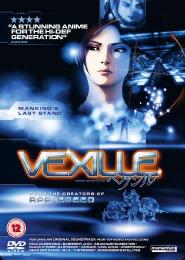


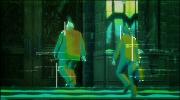


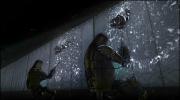







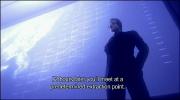











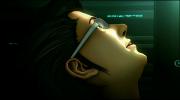


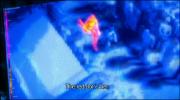










































Your Opinions and Comments
Be the first to post a comment!